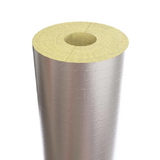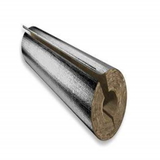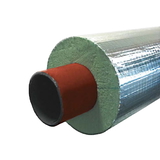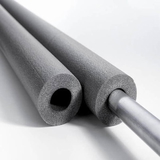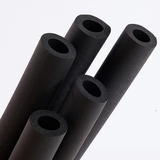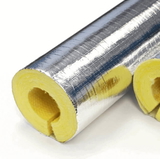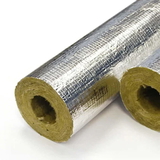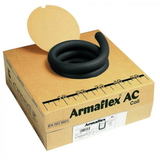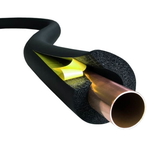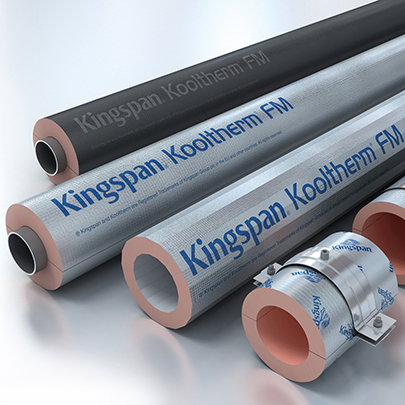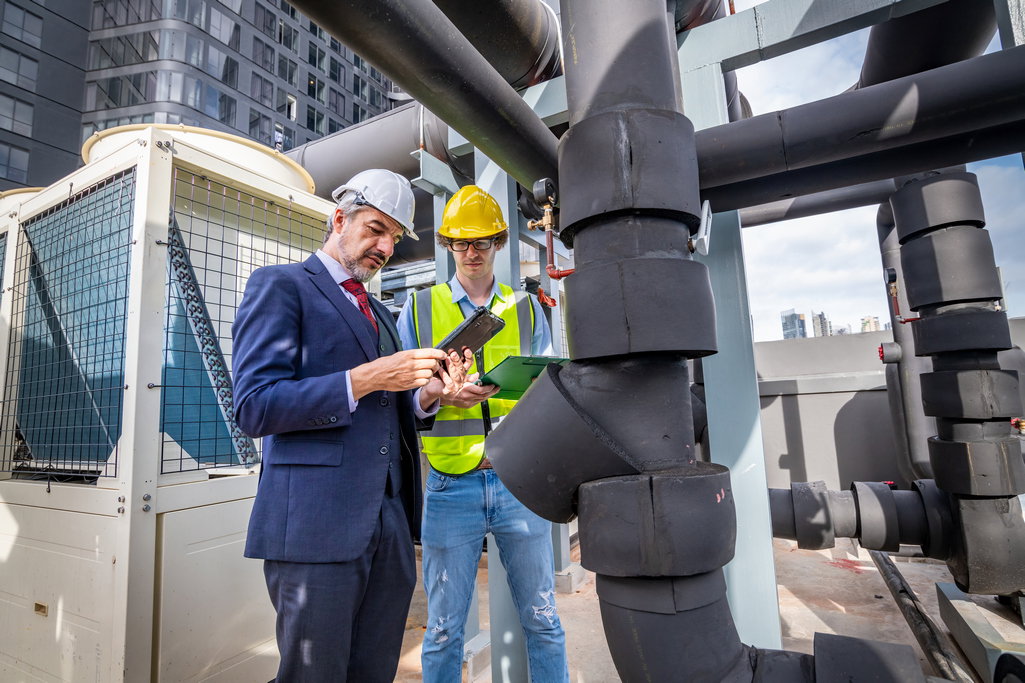- Blogs
- Is Pipe Insulation Toxic? A Comprehensive UK Guide
Is Pipe Insulation Toxic? A Comprehensive UK Guide
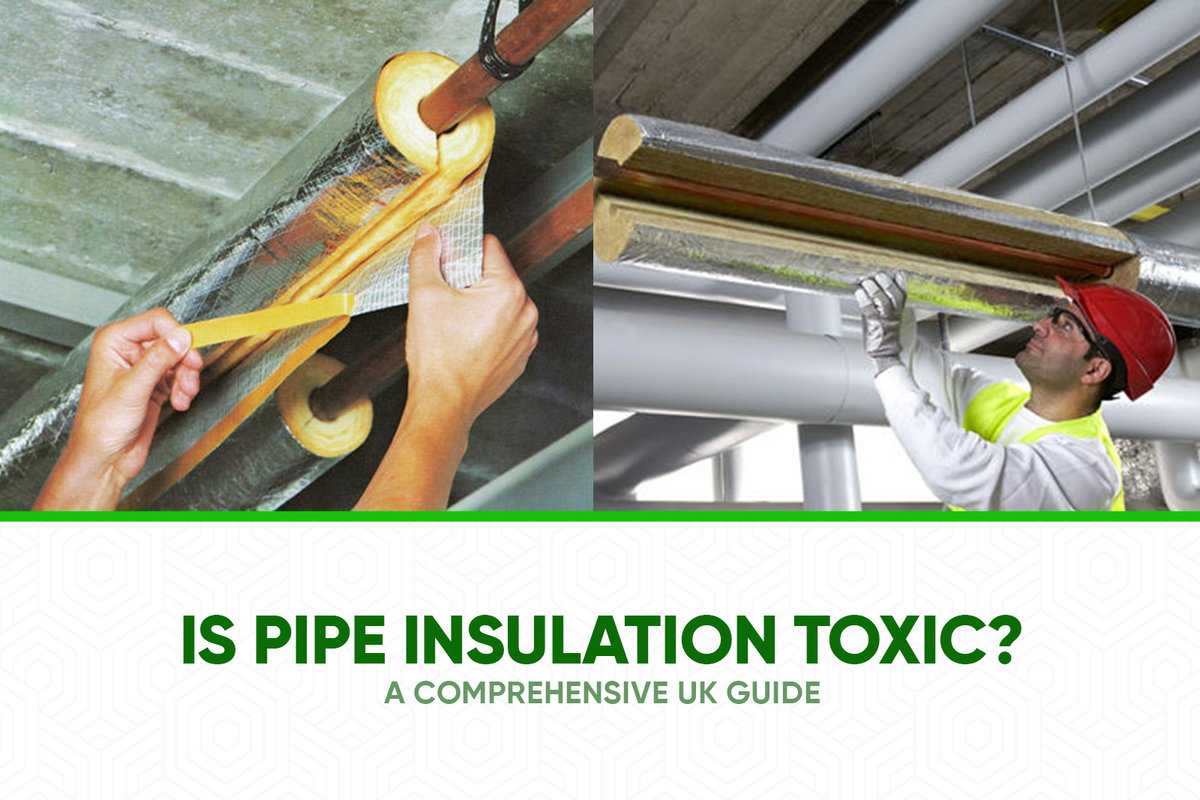
TLDR
Modern pipe insulation materials sold and installed in the UK are not considered toxic under normal conditions of use. The materials are stable and manufactured to meet stringent safety standards. The primary health considerations are twofold. First, the historical use of asbestos in buildings constructed before the year 2000 presents a serious hazard if disturbed; any suspected asbestos lagging must be handled by licensed professionals. Second, the installation of modern materials, particularly mineral wool, can release dust and fibres that cause temporary mechanical irritation to the skin, eyes, and respiratory tract. This is managed by following correct handling procedures and wearing basic personal protective equipment (PPE).
Introduction: Understanding the Purpose of Pipe Insulation
Pipe insulation, often referred to as pipe lagging, is an essential component in both residential and commercial buildings across the United Kingdom. Its primary function is to improve energy efficiency by preventing heat loss from central heating and domestic hot water pipework. By keeping the heat within the pipes, less energy is required to maintain water temperature, leading to lower fuel bills.
Beyond energy savings, pipe insulation serves other vital purposes. In unheated spaces such as lofts, basements, and garages, it provides crucial frost protection, preventing water pipes from freezing and bursting during cold weather. For cold water and air-conditioning pipework, insulation controls condensation. When warm, moist air comes into contact with a cold pipe, water droplets can form, leading to dampness, corrosion, and potential mould growth.
Proper insulation also contributes to public health. By ensuring hot water stays above 60°C and cold water remains below 25°C, it helps to minimise the risk of Legionella bacteria growth within water systems. This guide provides a clear, detailed examination of the materials used for pipe insulation in the UK and addresses the important questions surrounding their health and safety profile.
A Guide to Modern Pipe Insulation Materials in the UK
The UK market offers a range of specialised pipe insulation materials, each with distinct properties suited to different applications. Understanding these materials is the first step in assessing their safety.
Mineral Wool (Glass and Rock/Stone Wool)
Mineral wool is one of the most widely used insulation materials for pipework, particularly in heating, ventilation, and air-conditioning (HVAC) systems. It is manufactured by spinning molten glass (glass wool) or volcanic rock (rock or stone wool) into fine fibres.
These products are valued for their excellent thermal and acoustic insulation properties. A key characteristic of mineral wool is its non-combustibility and ability to withstand very high temperatures, making it a preferred choice for insulating hot water and steam pipes. It is commonly supplied as pre-formed, rigid sections that fit around the pipe, often with a factory-applied aluminium foil facing that acts as a vapour barrier. Prominent brands in the UK include Rockwool, Knauf, and Isover.
Flexible Foams (Polyethylene and Nitrile Rubber)![]()
Flexible foam insulation is common in domestic plumbing and air-conditioning applications due to its ease of installation and effectiveness.
-
Polyethylene (PE) Foam: This is a lightweight, closed-cell foam that offers good thermal performance and moisture resistance. It is a cost-effective choice for insulating domestic hot and cold water pipes. Typically grey, it is supplied in flexible tubes that are semi-split along their length, allowing them to be easily slipped over existing pipework. Common brands include Climaflex and Tubolit.
-
Nitrile Rubber (Elastomeric Foam): This is a synthetic rubber-based foam known for its high flexibility and superior resistance to water vapour. Its closed-cell structure makes it an excellent material for preventing condensation, and it is the standard choice for insulating refrigeration and air-conditioning pipework. It is also used on both hot and cold plumbing pipes. This material is typically black and is available in tubes, coils, and sheets. Leading brands include Armaflex and K-Flex.
Rigid Foams (Phenolic and PIR)
Rigid foams provide very high levels of thermal performance for a given thickness, making them suitable for applications where space is limited or where maximum energy efficiency is required.
-
Phenolic Foam: This is a rigid, closed-cell foam with one of the best thermal insulation performances of any readily available material. It is frequently used in high-specification building services and industrial applications. Phenolic insulation is supplied in dense, foil-faced sections. Well-known brands include Kingspan Kooltherm and Supaphen.
-
Polyisocyanurate (PIR): PIR is another type of rigid foam, developed from polyurethane, with good thermal properties and fire performance. It is used to insulate hot water pipes, steam pipes, and HVAC ductwork.
At-a-Glance Comparison of Common Pipe Insulation Materials
Material Type |
Common Form |
Key Characteristics |
Typical UK Applications |
| Mineral Wool (Rock/Glass) | Rigid, foil-faced sections | Non-combustible, high-temperature resistance, good acoustic insulation | Central heating, hot water systems, industrial pipework |
| Polyethylene (PE) Foam | Flexible, semi-split tubes | Cost-effective, easy to install, good moisture resistance | Domestic hot and cold water pipes |
| Nitrile Rubber Foam | Flexible tubes, coils, sheets | Highly flexible, excellent condensation control, good moisture resistance | Air-conditioning, refrigeration, hot and cold water pipes |
| Phenolic Foam | Rigid, foil-faced sections | Very high thermal efficiency, low smoke emission in fire | High-performance HVAC, building services, industrial applications |
| PIR Foam | Rigid sections or boards | Good thermal performance and fire resistance | Hot water and steam pipes, HVAC systems |
Health and Safety Profile of Modern Insulation
The question of whether pipe insulation is "toxic" depends on the specific material, the context of its use, and the distinction between different types of potential hazards. Modern materials are subject to rigorous safety standards that address risks during installation, throughout the product’s life, and in the event of a fire.
Mineral Wool Fibres: Understanding Mechanical Irritation
When mineral wool is handled, cut, or disturbed during installation, it can release coarse fibres and dust. Contact with these fibres can cause temporary skin itching. This is a mechanical irritation, not a chemical or allergic reaction, and it typically subsides shortly after exposure ceases. Inhaling the dust can also cause temporary irritation to the nose and throat, much like any other type of nuisance dust.
A critical point is that the mineral wool fibres used in insulation products sold in the UK today are not classified as carcinogenic. They are manufactured to be bio-soluble. This means that if any fibres are inhaled, they are readily dissolved by bodily fluids and cleared from the lungs over a short period. This characteristic is governed by European regulations (specifically Note Q of EU Directive 97/69/EEC), which ensures that the fibres do not persist in the body in the way that asbestos fibres do.
Once mineral wool insulation is installed and contained—for example, within a floor void or behind a wall—it is stable and does not release fibres into the living space. The potential for irritation is limited to the installation phase and is managed by wearing appropriate PPE.
Foam Insulation and Volatile Organic Compounds (VOCs)
Volatile Organic Compounds (VOCs) are chemicals that can be emitted as gases from certain solids or liquids, a process known as "off-gassing." Concerns about VOCs are often raised in relation to foam insulation. It is important here to make a clear distinction between different product types.
The most significant concerns about off-gassing relate to spray polyurethane foam (SPF). This type of insulation is manufactured on-site by mixing two liquid chemical components that react to create the foam. During this chemical reaction and the subsequent curing period, VOCs can be released into the air.
In contrast, the pre-formed pipe insulation discussed in this guide—polyethylene, nitrile rubber, phenolic, and PIR foams—are different. These are stable, fully cured products manufactured in a factory-controlled environment. Any significant off-gassing occurs during and immediately after the manufacturing process, long before the product reaches a building site or home. While trace levels of VOCs may be present, particularly from adhesives used in their construction, the emission levels from these solid, stable products are exceptionally low and not comparable to the potential emissions from freshly applied spray foam. Polyethylene foam, for example, is considered chemically inert and is approved for use in applications involving potable water.
Performance in a Fire: Smoke and Fumes
The behaviour of a material in a fire is a critical safety consideration. In the UK, construction products are classified according to the European standard BS EN 13501-1, known as the Euroclass system. This system rates materials from A1 (non-combustible) to F (highly combustible) and includes additional classifications for smoke production (s1 for low, s2 for medium, s3 for high) and the production of flaming droplets (d0 for none, d1 for some, d2 for high).
-
Mineral Wool: As it is made from rock or glass, mineral wool is non-combustible and achieves the highest fire classifications (A1 or A2-s1,d0). It does not contribute to a fire and does not produce significant smoke or toxic fumes when exposed to flame.
-
Foam Insulation: All foam insulations are organic materials and are therefore combustible to some degree. However, they are engineered with fire retardants to meet specific safety standards.
-
Nitrile rubber and phenolic foams typically achieve a Euroclass rating of B or C. Modern formulations are designed to produce low levels of smoke (an s1 or s2 rating) and no flaming droplets (d0), which improves safety during a building fire by maintaining visibility for evacuation.
-
In severe, under-ventilated fire conditions, some rigid foams like PIR and phenolic can produce toxic gases, including carbon monoxide and hydrogen cyanide. This is a serious fire safety hazard. For this reason, their use in buildings is carefully controlled by Part B of the Building Regulations, which often requires them to be fully enclosed by a fire-resistant material, such as plasterboard, to prevent them from becoming involved in the early stages of a fire. This risk is associated with the extreme conditions of a building fire, not with the material under normal circumstances.
-
Summary of Potential Hazards and Mitigation
Hazard |
Affected Materials |
When It's a Risk |
How to Control It |
| Mechanical Irritation (Fibres/Dust) | Mineral Wool (Rock/Glass) | During installation, cutting, or removal. | Wear gloves, goggles, and a dust mask (FFP2). Ensure good ventilation. |
| Off-Gassing (VOCs) | Primarily on-site spray foams (not pre-formed pipe insulation). | During and shortly after application and curing. | For pre-formed pipe insulation, this risk is negligible. Choose low-VOC products where specified. |
| Toxic Smoke (in a fire) | PIR and Phenolic Foams | Only during a building fire, especially in under-ventilated conditions. | Use is governed by Building Regulations (Part B). Materials must be installed correctly, often behind a fire-resistant barrier. |
| Asbestos Fibres | Old pipe lagging (pre-2000) | Whenever disturbed, cut, broken, or handled. | STOP WORK. Do not touch. Contact a licensed asbestos removal contractor. |
The Legacy Hazard: Asbestos in Older Pipe Lagging
It is impossible to discuss the safety of pipe insulation without addressing asbestos. The historical use of asbestos is the primary reason for public concern, and it is vital to distinguish this legacy hazard from modern materials.
Why Asbestos Was Used
Until its final ban in the UK in 1999, asbestos was widely used in the construction industry. It was valued for its excellent thermal insulation, fire resistance, and affordability. Asbestos was commonly applied as lagging on pipes, boilers, and hot water cylinders in homes, schools, hospitals, and industrial sites.
Identifying Suspect Lagging
Asbestos pipe lagging does not have one single appearance. It is often a white or grey fibrous material that is highly friable, meaning it flakes and crumbles into a powder with very little pressure. It can sometimes appear lumpy, resembling dried cement. Often, the raw asbestos was wrapped in a protective coating or canvas, which may have been painted over the years, making visual identification difficult.
The most reliable indicator is the age of the property. Any building constructed or refurbished before 2000 may contain asbestos. If you encounter pipe lagging that fits this description in an older property, you must assume it contains asbestos until proven otherwise by professional testing.
The Dangers of Disturbance
Asbestos pipe lagging is considered one of the most dangerous asbestos-containing materials (ACMs). Its friable nature means that even minor disturbance—such as scraping, cutting, or breaking it—can release vast quantities of microscopic asbestos fibres into the air.
When these fibres are inhaled, they can become lodged deep within the lungs. The body cannot break them down or remove them. Over many years, this can lead to serious and fatal diseases, including mesothelioma (a cancer of the lung lining), asbestos-related lung cancer, and asbestosis (a scarring of the lungs). A key danger is the long latency period; symptoms may not appear for 15 to 60 years after the initial exposure.
The Golden Rule: Stop and Seek Expert Help ![]()
The guidance from the Health and Safety Executive (HSE) is absolute and unambiguous. If you find any material you suspect is asbestos pipe lagging:
-
Stop work immediately.
-
Do not attempt to touch, disturb, or remove it.
-
Evacuate the area and prevent others from entering.
-
Contact a licensed asbestos removal contractor for professional assessment and removal.
The removal of asbestos lagging is a high-risk, legally controlled activity that must only be performed by trained and licensed professionals under strictly controlled conditions.
The UK Regulatory Framework: Ensuring Product Safety
The safety of modern pipe insulation is not left to chance. It is underpinned by a multi-layered system of British Standards, Building Regulations, and workplace safety laws that govern everything from material specification to installation and installer protection.
British Standards (BSI)
The British Standards Institution (BSI) develops the technical standards that define quality and safety for products and services. For pipe insulation, two are particularly important:
-
BS 5422: Method for specifying thermal insulating materials. This is the core standard for pipe insulation performance. It provides tables and calculation methods to help designers and installers select the correct material and thickness to control heat loss and prevent condensation for various pipe sizes and temperatures. The latest version, BS 5422:2023, is aligned with current energy efficiency goals and mandates the use of the Euroclass system for fire performance.
-
BS 5970: Code of practice for thermal insulation of pipework. This standard focuses on the installation of insulation. It provides best-practice guidance on how to cut, fit, and seal insulation correctly to ensure the entire system performs as designed and maintains its integrity over time.
Building Regulations
Building Regulations set the legal standards for the design and construction of buildings to ensure health and safety.
-
Part L (Conservation of Fuel and Power): This regulation mandates minimum levels of energy efficiency for new and existing buildings. It requires that heating and hot water pipes are insulated to limit heat loss, contributing to the overall energy performance of the building. This is a legal requirement in England, Wales, Scotland (under Section 6), and Northern Ireland (Technical Booklet F).
-
Part B (Fire Safety): This regulation governs the fire safety of buildings. It sets requirements for how construction materials must perform in a fire to prevent flame spread and ensure the safety of occupants. It references the Euroclass system and influences which insulation materials can be used in certain locations, such as in ceiling voids or along escape routes.
Workplace Safety (HSE and COSHH)
The Health and Safety Executive (HSE) is the national regulator for workplace health and safety. The Control of Substances Hazardous to Health (COSHH) Regulations require employers to assess and control the risks from exposure to hazardous substances at work. For insulation installers, this includes the dust and fibres generated during cutting and handling. A COSHH assessment would identify these risks and mandate control measures, such as the provision of correct PPE (gloves, masks, goggles) and ensuring adequate ventilation in the work area.
This comprehensive system ensures that safety is considered at every stage: the product is made to a safe specification (BS 5422), the building is designed to be safe and efficient (Parts L and B), and the installer is protected during their work (COSHH).
Best Practices for Safe Installation and Disposal
Following best practices when handling and installing modern, non-asbestos insulation ensures both safety and optimal performance.
Preparation and Personal Protective Equipment (PPE)
Before beginning any installation work, ensure the area is well-ventilated. Regardless of the material, it is good practice to wear basic PPE to minimise irritation:
-
Gloves: To prevent skin contact with fibres or dust.
-
Safety Goggles: Essential when working overhead to protect eyes from falling debris.
-
Dust Mask: A mask rated to at least FFP2 is recommended when cutting mineral wool to prevent inhalation of fibres.
Handling and Cutting Techniques
A clean, precise cut is essential for a snug fit and minimal dust creation.
-
Mineral Wool: Use a long-bladed trimming knife or a serrated insulation knife. Cut the sections on a stable, flat surface. To ensure a tight fit between sections, make sure the cuts are straight and square.
-
Foam Insulation (PE, Nitrile Rubber, Phenolic): These materials can also be cut easily with a sharp knife. To insulate bends and T-junctions, specific miter cuts are required. For a 90-degree bend, cut the ends of two pieces at a 45-degree angle. For a T-junction, a 90-degree wedge is cut from one piece, and the end of the joining piece is shaped into a point to fit snugly into it.
Fitting and Sealing ![]()
Gaps in insulation create "thermal bridges" where heat can escape, compromising the system's effectiveness.
-
Ensure all insulation sections fit tightly against the pipe and against each other.
-
For foil-faced products, all joints (both along the length and between sections) must be sealed with a matching self-adhesive aluminium foil tape. This is crucial for maintaining the integrity of the vapour barrier and preventing moisture ingress.
-
For non-faced foam insulation like nitrile rubber, seams should be sealed using a compatible contact adhesive. Self-sealing versions, which have pre-applied adhesive strips, simplify this process.
Responsible Disposal of Off-cuts and Old Insulation (Non-Asbestos)
Proper disposal of waste insulation is important for environmental and safety reasons.
-
Mineral Wool: Unused off-cuts and old mineral wool insulation should be bagged securely in heavy-duty sacks to contain any loose fibres. Many local Household Waste Recycling Centres (HWRCs) accept it, but it is essential to check with your local council first as policies can vary. Some manufacturers, such as Rockwool, offer take-back schemes for recycling clean, unused off-cuts from construction sites.
-
Foam Insulation: Disposal of foam insulation is more complex. It is a plastic product that is not typically accepted in domestic recycling collections. Small quantities of off-cuts may be disposed of in general household waste, but for larger amounts from renovation projects, it is considered construction waste. It is illegal to dispose of construction waste in household bins. It should be taken to an HWRC (if accepted) or disposed of via a licensed waste management company.
Conclusion: A Reassuring Summary
The evidence shows that modern pipe insulation products sold in the UK are safe for use in homes and commercial buildings when specified and installed correctly. They are stable, inert materials that do not pose a toxic risk under normal conditions.
The legitimate concerns about the safety of pipe insulation primarily fall into two distinct categories. The first is the severe, historical hazard posed by asbestos lagging in properties built before 2000. This material is extremely dangerous if disturbed, and any suspicion of its presence must be met with immediate cessation of work and a call to licensed professionals.
The second category involves the minor, manageable risks associated with the installation of modern materials. The dust and fibres from mineral wool can cause temporary mechanical irritation, a risk that is effectively controlled through the use of basic PPE and safe handling practices.
Thanks to robust materials science, comprehensive British Standards, and legally enforced Building Regulations, homeowners and professionals can be confident in the safety and value of insulating pipes. It remains one of the most effective measures for improving energy efficiency, preventing damage from frost, and maintaining a healthy building environment.
Legal Disclaimer
The information contained in this article is provided for general guidance and informational purposes only. It is not intended to constitute definitive legal, technical, or professional advice on any specific matter. The application of laws and regulations will vary depending on particular circumstances, and such laws and regulations are subject to change.
You should not act, or refrain from acting, on the basis of any information contained in this guide. You should seek appropriate professional advice on your particular circumstances from a suitably qualified professional, such as a licensed asbestos surveyor, a building control officer, a qualified heating engineer, or a professional insulation installer.
We disclaim all liability and responsibility (including in negligence) for any action taken or not taken in reliance on the information provided in this article, to the fullest extent permitted by the law of England and Wales. No warranties, express or implied, are made regarding the accuracy, completeness, or currency of the information provided.

Samuel Hitch
Managing Director
Buy Insulation Online.
Leave A Reply
Your feedback is greatly appreciated, please comment on our content below. Your email address will not be published. Required fields are marked *





